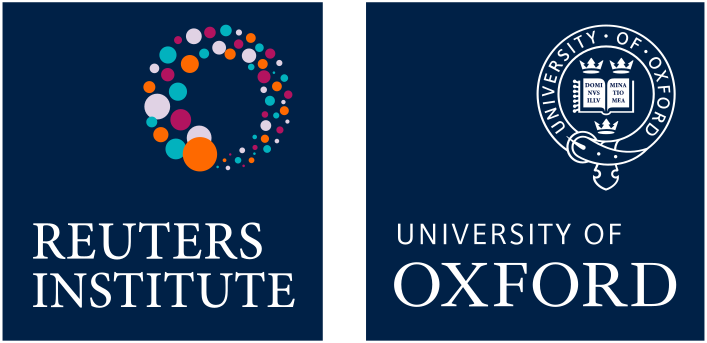
India
Press freedom in India remains a significant concern following the re-election of Prime Minister Narendra Modi for a historic third term. Media ownership remains concentrated with a few wealthy tycoons that are largely supportive of the prime minister, while independent media and journalists critical of the government are often subjected to harassment or legal challenges. Against this background, innovative collaborations amongst digital news platforms have been offering a fresh alternative to mainstream media narratives.
India’s fragmented yet diverse news space was dominated by extensive political coverage in an election year. Yet there was also space for a unique collaborative effort by prominent and like-minded digital news platforms. The Wire, Scroll.in, NewsLaundry, Caravan, and The News Minute - known for their adversarial and independent stance on critical issues – worked together on day-long coverage and analyses of the general and assembly election results. The programme which was broadcast via YouTube, was free of advertisements and driven by subscriber or donation funding, filling a gap in mainstream news coverage. These collaborations have recently expanded to video podcasts discussing current news developments, and co-operation on investigative projects – again run on subscriber donations.
In January, Meta’s announcement that it will end its third-party fact-checking initiative in the US caused concern, especially among small newsrooms and independent organisations who partner with it. While there has been no confirmation that the Indian leg of the programme will be cancelled, fact-checkers in India are unsure whether ‘Community Notes’, which may replace fact-checks by IFCN-certified organisations in the future, will carry the same credibility, rigour, and standards in combating misinformation on social media.1
Third-party fact-checking initiatives have helped Meta label and demote rampant misinformation on its platforms, as well as supporting newsrooms financially through the partnership. Meta owned WhatsApp was cited by more than half of our Indian survey respondents (53%) as the channel that carried the biggest threat when it comes to false and misleading information, by far the highest score across markets.
Over the years, our data for India shows a strong preference for smartphones to access news along with social media platforms such as YouTube (55%), WhatsApp (46%), Instagram (37%), and Facebook (36%) being predominantly used for this purpose amongst our primarily English-speaking survey sample. Veteran journalists like Ravish Kumar from traditional newsrooms like NDTV too have moved away and leveraged video-based social media platforms to start their news channels where they have more freedom to express their own views. Content creators and young influencers, who focus on news through YouTube, are popular among our respondents. Influencers like Dhruv Rathee who commands around 28 million subscribers on YouTube were particularly popular during the general elections.2
Despite this, legacy news brands in print, as well as commercial and public broadcasters, still enjoy high levels of viewership across our mainly English-speaking survey respondents –with many of these such as NDTV, Times of India and Hindustan Times also performing well online. Legacy regional language brands in print such as Dainik Bhaskar (18%) and its online platform (16%) also enjoy good readership among our respondents as do digital-only news platforms in English (The Print, 14%) and bilingual languages (NewsClick, 11%).
The RSF report on press freedom (2025) notes that media pluralism is challenged across the world, especially in countries in Asia such as India due to ‘economic pressures’ with increasing corporate ownership and their connections with political powers3. There are also concerns over increasing regulatory powers of government authorities through several new legislations such as the Telecommunications Act, and the Digital Personal Data Protection Act.
In February, the website of south India-based Tamil news outlet, Vikatan Plus, was blocked by the Central Government after it published a cartoon critical of the Prime Minister and his government in handling the deportation of unauthorised Indian migrants from the US by the Trump administration. In January, Mukesh Chandrakar, an independent regional journalist in Bastar district in the Indian state of Chhattisgarh was reportedly murdered for exposing corruption in local road contract projects. Small and independent investigative newsrooms also continue to face financial-cum-regulatory challenges, such as The Reporters’ Collective, whose non-profit status was cancelled by tax authorities early this year4. These instances continue to raise concerns over larger problems of press freedom and journalists’ safety in the country.5
Meanwhile, in the highly polarised television news space, Mirror Now, a news channel in the Times Group, is said to shut down later this year, reportedly due to financial losses. Times Now, also part of the Times Group and a popular news channel, which enjoys good viewership figures in our survey, may absorb some of the journalists from the Mirror Now newsroom.
Anjana Krishnan
Research Associate, Asian College of Journalism, Chennai
Methodology note
These data are based on a survey of mainly English-speaking, online news users in India – a small subset of a larger, more diverse, media market. Findings in this online poll are not nationally representative and will tend to under-represent the continued importance of traditional media such as TV and print.
Trust in news overall
43%
(+2)
=17/48
Overall trust in the news has remained largely stable over the last few years. When it comes to brand trust, legacy print titles and public broadcasters tend to enjoy higher levels of trust. However, brands that are either extremely critical or extremely uncritical of those in positions of power, tend to have lower trust scores in a polarised environment. Scores should not be seen as a measure of the quality or trustworthiness of the content itself.

